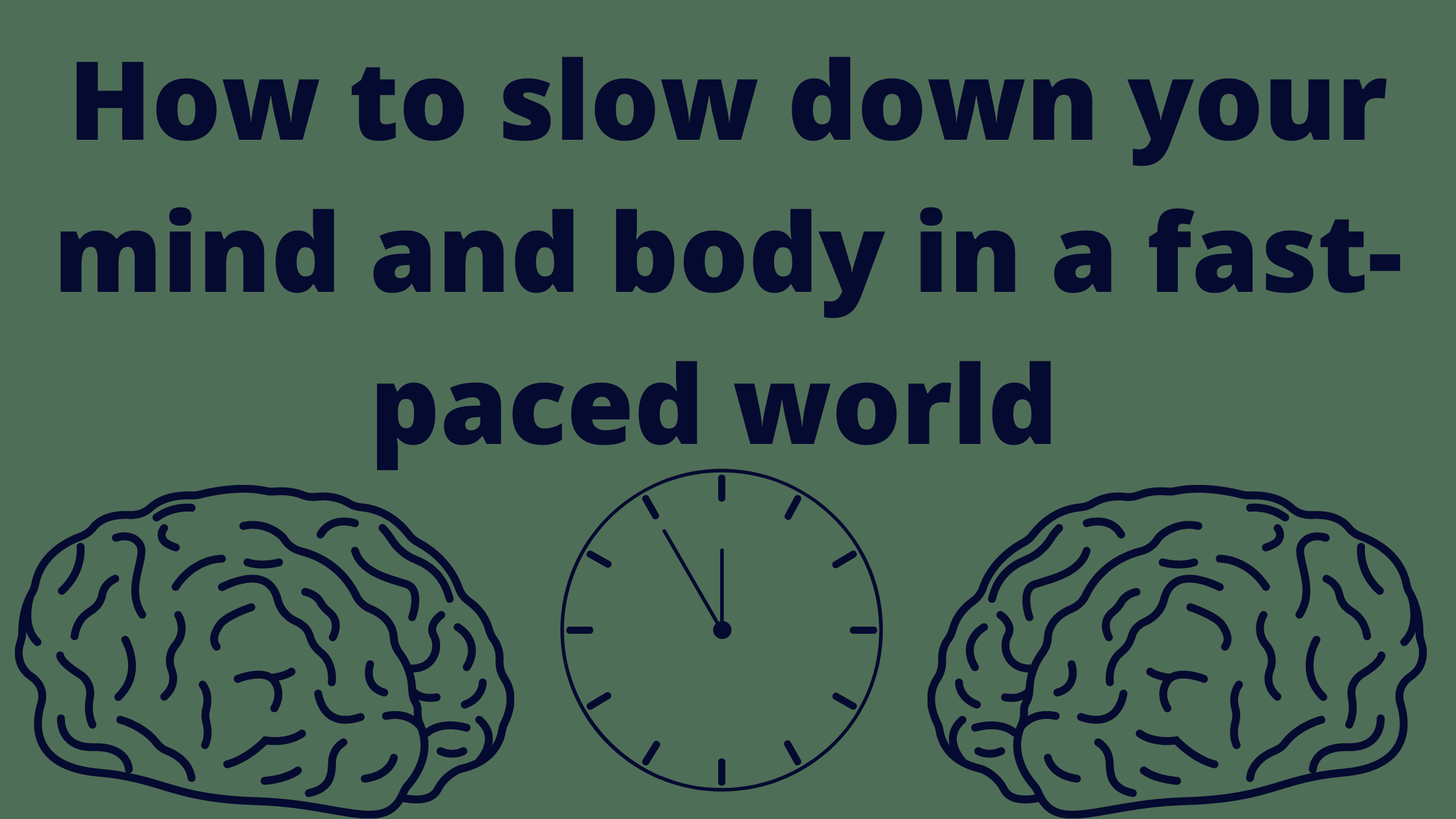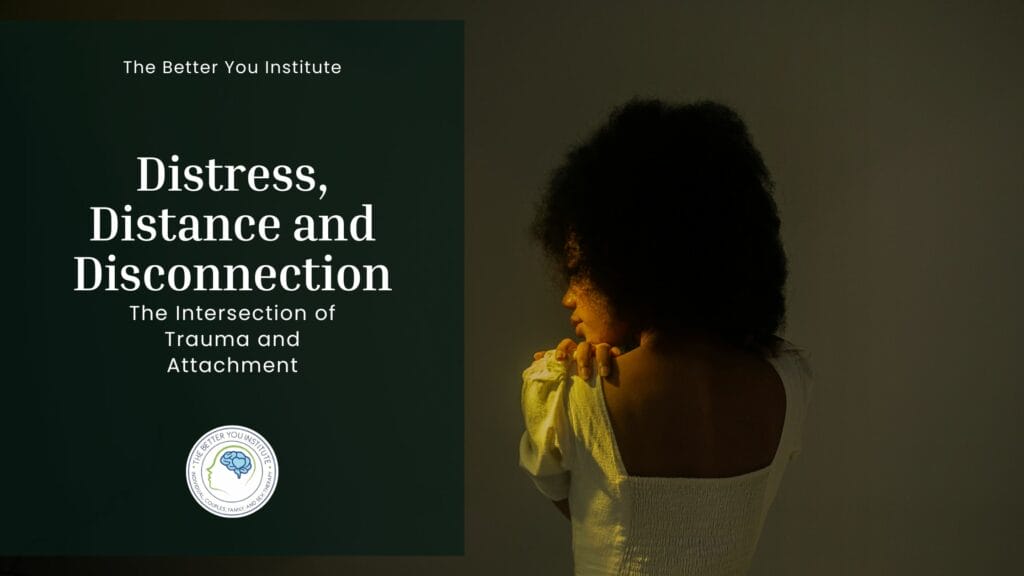Being constantly on affects our mental energy and anxieties and how we communicate with and show up for others and ourselves, and how we give (or don’t give) our body the rest it needs. This article will help you understand the negative impacts of rushing and provide you with tools to begin slowing down and hitting the pause button to better your mind and body.
Table of Contents
Learn to Slow Down Your Racing Thoughts:
When our mind is racing a mile a minute, we lose the ability to be present. We go into our heads and lose our concentration, become disoriented to our surroundings, or become numb even. Many of us are being told on a regular basis to stay organized, do this task, finish all our assignments, practice self-care, don’t forget to shower, call this person, check off these lists, and on and on. It can feel exhausting! Our poor minds can get so bogged down and overwhelmed by all of this.
We may jump to worst-case scenarios or always feel like we need to be going going going.
What Anxious Thinking Can Look Like:
 Racing thoughts
Racing thoughts- Frequent overwhelm or worry
- Poor concentration and focus
- Disorganization
- Forgetfulness
- Catastrophizing (This is when we jump to the worst-case scenarios)
- Quick thinking (like jumping to conclusions) rather than slowed thinking where we are aware and more rational
- Having trouble listening to others because we are stuck in our thoughts
- Low sense of Self: Thinking we are not good enough, unloveable, unworthy. That we are faulty/broken, a failure, etc.
- Being in a cycle of fear or self-doubt
- Being in a shame or guilt cycle
- Allowing our emotions (typically fear) to drive us. Thus, trouble coming up with rational thoughts or solutions
So how do you slow down and quiet your thoughts? How do you cope with irrational or unhelpful thinking?
Tools to Slow Down Your Anxious, Overwhelmed Thoughts at the Moment
Awareness of the thoughts: Take time to check in with what your daily thoughts sound like overall:
- Is there always overwhelm or pressure?
- Are you being kind to yourself in your thoughts?
- Are your thoughts on the present moment or in the future or past?
- Are you on autopilot, or are you staying aware and mindful throughout your day?
Example Activity: You are getting ready for a date; Thought: I should just call and cancel, nothing is fitting me right, and I look frumpy.
 Say it out loud: “I should cancel this date. Nothing is fitting me right, and I look frumpy.”
Say it out loud: “I should cancel this date. Nothing is fitting me right, and I look frumpy.” - Label the meaning or feeling of the thought:
- I’m nervous
- I don’t feel good about my body (disgust/shame)
- Understand where the thoughts come from:
- My mom always told me to suck it in whenever she took me shopping; I don’t believe I look good in anything.
- My last date didn’t go well, so I don’t trust that this one will too, and I feel like I’m wasting my time.
- Challenge the truth or reality to these thoughts:
- I’ve been complimented several times in this outfit; I look good!
- One bad date doesn’t have to define future dates. I have a fresh start with this one.
Example Activity: You are at your desk working on a project you find boring but necessary; Thought: the sky is blue.
- Say it out loud: “The sky is blue.”
- Label the meaning or feeling of the thought: kind of meaningless but maybe a representation that I’m bored
- Understand where it comes from: boredom? A yearning to go outside?
Try to practice catching and noticing thought patterns that arise. As a thought comes in, spend some time with it. Say it out loud, label the meaning or feeling of the thought, understand where it comes from within you.
2. Thought Logging:
- Try to practice keeping a thought log to see the helpful and unhelpful thoughts (sometimes called Cognitive Distortions) coming up for you. Pay attention to what is happening when rushing or stuck in anxious thinking patterns. Challenge yourself to come up with helpful alternate responses or thoughts.
Example Activity: You get invited to a party, but you don’t know many people who will be there. You start getting anxious, and thoughts come up about how no one will like you or want to be your friend. Your mind starts racing and getting stuck in unhelpful thoughts like “No one will like me because I’m _____(weird/awkward/ugly/unlikeable). I will never make new friends. What’s the point in going?” The unhelpful thoughts here are:
- Jumping to conclusions – interpreting meaning with little or no evidence
- Catastrophizing – seeing the worst-case scenario
- All or nothing thinking
- Disqualifying the positives
Helpful Alternate Responses can be:
- Validation into empowerment: Attending this party is scary, but I have met new people before, and I can do this again.
- Positive regard: I know my friends like ___(my style, attitude, caring for others, silliness, etc.) about me, so that shows that I am likable.
- Acknowledge reality into empowerment: I may not connect with everyone, but I can talk to at least one new person.
- Problem-solving: My friend invited me. She wants me there. Maybe I can talk to her to get to know some of the people in this new group, and she can help introduce me.
Mindfulness/Grounding:
 Congratulations – by bringing awareness to your thoughts and logging them, you’ve ALREADY participated in mindful thinking! Let’s take it a step further…
Congratulations – by bringing awareness to your thoughts and logging them, you’ve ALREADY participated in mindful thinking! Let’s take it a step further… - Read or watch videos on mindfulness.
- Engage in mindfulness meditations like Leaves On A Stream
- Practice deep breathing techniques like:
-
- Diaphragmatic breathing
- Box breathing – breathe in for 4, hold for 4, breathe out for 4, hold for 4
- Listen to or think about calming or relaxing music. Or, pick a song that you can use every time you want to ground yourself. This song should have a positive meaning to you, a catchy beat that you enjoy, or something that will work to reset yourself.
- Tell or think to yourself, “I am slowing down. I am present. I am here.”
- Use 54321 grounding technique – find and label 5 things you can see, 4 things you can feel/touch, 3 things you can hear, 2 things you can smell, and 2 things you can taste.
- Play categories with yourself – Pick a topic (dogs, football teams, rock bands, etc.) and begin naming, either in your head or out loud, every possible response to this.
- Complete a Body Scan – see below
Compassion work:
- Practice daily gratitude and try to include gratuities for how you navigated and managed your thinking
- Increase your inner monologue or self-talk to be more supportive and kind, especially towards the practice of slowing down.
- Example: “Wow, look at me! I caught myself rushing and used _______ (deep breathing, grounding, etc.) to slow my thoughts down. This action helped me feel more ______ (relaxed, calm, focused, etc.).”
- Using positive affirmations or mantras
Check-in questions to ask yourself:
-What thought pattern am I getting stuck in, and how do I navigate this?
-Am I in an anxious state or a relaxed state?
-Do I need to take a step back and mentally ground myself?
-Did I give myself praise for shifting unhelpful thoughts?
Giving Your Body a Break:
How exhausted is your body at the end of your day? When or how did you show your body love and give it a break from the hustle and bustle? Our bodies carry our stresses, tensions, feelings, traumas, and so much more. (A good book discussing this is The Body Keeps the Score by Bessel van der Kolk.) No wonder we can feel weighed down after a long day or especially after a very active day. In our fast-paced world, our bodies are constantly pushing the limits.
Constant stress and overwhelm in our bodies can result in the following:
- Tiredness
- Muscle aches/tension
- Feeling heaviness or like we are being weighed down
- Increased or decreased heart rate
- Feeling on edge
- Increased or decreased appetite and sleep
- Increased or decreased sex drive
- Not being able to relax or get comfortable
- IBS like symptoms
- The onset of illness (short-term or long-term)
Tools to Relax in Your Bodies:
- Practice relaxation and body scan techniques such as Progressive Muscle Relaxation
- Box Breathing Exercise
- Yoga
- Meditation
- Movement like exercise or dancing (just remember to be grounded in these exercises, so you are not rushing through it)
- Showing your body kindness or gratitude
- Example: “Go me! I felt my body continue to feel tense, and I used muscle relaxation to get rid of it.”
Check-in questions to ask yourself:
- Am I feeling tense and on edge or relaxed and grounded?
- What’s my go-to body relaxation technique to keep in mind if needed?
- What is my body telling me to pay attention to, and how can I respect that?
- Have I paused my body at all today, or have I been on the go non-stop?
- Am I holding my breath?
When we begin to slow down, we can see and feel things more clearly. Our thoughts are then more rational, direct, kind, and empowering. Our bodies can feel more relaxed, comfortable, and grounded.
Our Language and Communication in a Rush
Do you find it hard to stop and think before you speak? It’s common to want to be heard and get our thoughts or feedback out for others to hear. But sometimes, this can come at a high cost if we do not slow down and reflect on what we are saying or how we say it. We can come off as offensive, critical, blaming, or just not supportive.
These responses tend to happen when we rush to speak or react versus respond. People want conversations to happen quickly and on their time in a fast-paced world. There can be so many roadblocks and problems coming up in our communication and the language we use when we do not slow down.
It’s also important to be mindful of using extreme words in our vocabulary, especially when words are accusatory or shaming. Leaving the person feeling put down or less than. Examples of extreme words are “right/wrong” or “always/never.” When we react versus respond, we are not mindful or clear in what we are saying.
When we are reactive, this can look like:
- Blaming/Shaming
- Being aggressive or accusatory
- Using “you” statements instead of “I” statements
- Always coming in hot to the conversation
- Not being transparent in our feedback or with our intention
- Interrupting or rushing
- Using one of John Gottman’s Four Horsemen: Defensiveness, Criticism, Contempt, or Stonewalling
- Saying something we don’t mean
- Saying something just to say something with nothing to back it
- Being a ‘know it all’
When we are responding, this can look like:
- Approaching the conversation with kindness and respect
- Using “I” statements to share how are we feeling
- Being intentional about what we want to say or the outcome/feedback we’d like
- Coming from a mindful and grounded place
- Being our most assertive self (not to be confused with aggressive)
- Being a good listener and building on the conversation vs. getting out what you need to say with little regard for the other’s thoughts/feelings
- Working towards understanding, compassion, and empathy
- Giving the other person the benefit of the doubt/seeing the goodwill in them
- Owning your role in the situation or outcome
- Owning when you don’t have the answers and saying, “I don’t know.”
Ways to slow down when we speak:
- Take a deep breath or do a deep breathing exercise before you respond
- Use muscle relaxation to release built-up tension or stress
- Do meditation before engaging in the conversation
- Use active listening techniques: “What I heard you say is…,” “I just want to make sure I’m on the same page with you, you said…,” “Can you repeat what you said? I didn’t get it all.”
- Use eye contact; face the person
- Count to 5 before responding
- Tell yourself something you appreciate about the other person before responding to them.
Check-in questions to ask yourself:
- Am I reacting, or am I responding?
- Do I need to take a breath or take a step back?
- Do I need to shift the language I am about to use?
- What is my intention in this conversation?
- Am I calm and relaxed, or am I escalated?
Conclusion
Remember, slow and steady wins the race. When grounded in our minds and bodies, our thoughts, responses, and actions will be more lucid, rational, and kind. Therefore, it’s vital to begin daily check-ins to catch yourself rushing and use the different steps explained above to help you slow down.
These are just some tips and techniques to use, so feel free to explore other methods, books, or podcasts on this topic. If you would like more help in relaxing and slowing down your mind and body, or if you have questions on this topic or are looking for more support, please reach out to one of our trained therapists at The Better You Institute. Call us at 267-495-4951.
Meet The Author:

Caitlin Siekerka
Licensed Professional Counselor
Caitlin Siekerka, LPC, a Licensed Professional Counselor in Pennsylvania and New Jersey, is dedicated to guiding individuals on their path to finding meaning and purpose. She uses a compassionate, empathetic approach in therapy, helping clients achieve balance and develop coping skills. Specializing in depression, anxiety, self-esteem issues, bipolar disorder, grief, trauma, life transitions, and substance use, Caitlin offers personalized therapy using techniques like CBT, DBT, and mindfulness. An LGBTQ+ ally, she creates a safe space for growth and exploration in Philadelphia. Caitlin holds a master’s in Counseling Psychology from Rosemont College, continually educating herself to provide the best support.
Learn more about Caitlin Siekerka ⇒


 Racing thoughts
Racing thoughts Say it out loud: “I should cancel this date. Nothing is fitting me right, and I look frumpy.”
Say it out loud: “I should cancel this date. Nothing is fitting me right, and I look frumpy.”  Congratulations – by bringing awareness to your thoughts and logging them, you’ve ALREADY participated in mindful thinking! Let’s take it a step further…
Congratulations – by bringing awareness to your thoughts and logging them, you’ve ALREADY participated in mindful thinking! Let’s take it a step further… 




